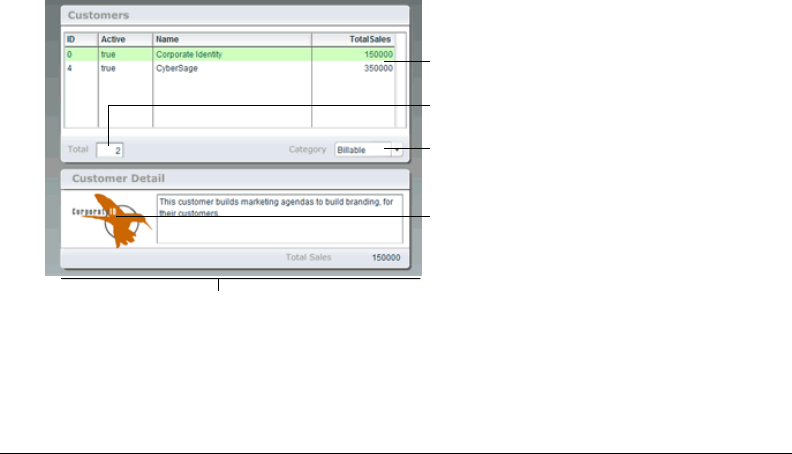User Guide
Table Of Contents
- Contents
- About Flash Remoting
- Getting Started
- Using Flash Remoting ActionScript
- Using the RemotingConnector component (Flash Professional only)
- Using Flash Remoting Data in ActionScript
- About Flash Remoting and data types
- Understanding Action Message Format
- Converting from ActionScript to application server data types
- Converting from application server data types to ActionScript
- ColdFusion to ActionScript data conversion issues
- About working with objects
- About working with RecordSet objects
- About working with XML
- The NetConnection Debugger
- Using Flash Remoting with ColdFusion MX
- Using Flash Remoting for Java
- About Flash Remoting for Java
- Calling Java classes or JavaBeans from ActionScript
- Calling Enterprise JavaBeans (EJBs) from Flash
- Calling servlets and JSPs from Flash
- Calling JMX MBeans from Flash (JRun only)
- Calling server-side ActionScript from Flash (JRun only)
- Handling function results in ActionScript
- Using Flash Remoting with JRun security
- Passing XML objects between Flash and Java
- Viewing Flash Remoting log entries
- Using Flash Remoting for Microsoft .NET
- Flash Remoting for Microsoft .NET
- Calling ASP.NET pages from Flash
- Making an ASP.NET page available to Flash Remoting
- Getting a reference to an ASPX-based service in ActionScript
- Invoking ASPX pages in ActionScript
- Using the Flash Remoting custom server control in ASPX pages
- Using the Flash Remoting namespace in code-behind files
- Using ASP.NET state management with Flash Remoting
- Using ASP.NET exception handling
- Using ADO.NET objects with Flash Remoting
- Displaying a RecordSet object in Flash with ActionScript
- Calling web services from Flash
- Calling ASP.NET assemblies from Flash
- Viewing Flash Remoting log entries
- Using NetServices and Connection Classes
- Index

Using the RemotingConnector in the CustomerInfoExampleCon application 57
The following section presents a sample application that uses the RemotingConnector
component.
Using the RemotingConnector in the CustomerInfoExampleCon
application
The CustomerInfoExampleCon application, which this section describes, illustrates the following
Flash Remoting for Flash MX 2004 ActionScript 2.0 features:
• Querying of a database (Microsoft Access) using ColdFusion Component (CFC)
• Formatting and paging of a RecordSet result
• Data binding using the RemotingConnector component
• Specifying of the gateway URL using HTML
You can find the CustomerInfoExampleCon application in the following folders:
• /Program Files/Macromedia/Flash MX 2004/en/First Run/RemotingSamples/Server
• /Program Files/Macromedia/Flash MX 2004/en/First Run/RemotingSamples/Server
See the Readme.htm and RemotingCustomerExamplesWalkthrough.htm files in the
RemotingSamples folder for information on how to set up and use this sample application. You
can access the Flash and ActionScript files for this example in the Client subfolder, if you want to
make changes to it.
The following figure illustrates the user interface for the application. Based on the category that a
user selects in the Category list, the application returns a paged RecordSet object containing the
qualifying customers from the database. The application uses the RemotingConnector to bind
the data in the RecordSet object (ID, Active, Name, and Total Sales) to the corresponding
columns in the data grid. The Customer Detail section of the user interface displays a logo and
descriptive text about the customer that is currently selected in the DataGrid component.
Data is the result of remoting service call to
CFC that returns a paged record set.
Total number of customers for the current
category.
Category list filters data in grid. List is
populated by remoting service call to CFC.
Loader displays images referenced by
URL in Access database.
Customer detail information is populated
from currently selected item in data grid.










